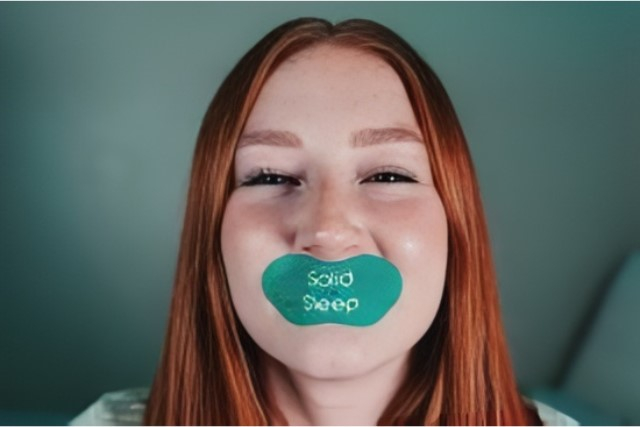Mouth taping involves placing a breathable, gentle adhesive strip across the lips before bed to support nose breathing. It’s not meant to seal the mouth tightly; rather, it provides a light tactile cue that encourages the lips to remain closed so air flows through the nose. This can be especially helpful during sleep, when breathing patterns are less conscious and mouth breathing can become habitual.
The importance of nasal breathing has been recognized across cultures, largely for its role in filtering and conditioning air and promoting relaxation. In recent years, interest in mouth taping has surged as people learn more about how mouth breathing can affect sleep quality, hydration, and oral health. Wellness enthusiasts, dental professionals, and athletes often explore mouth taping for its potential to improve respiratory efficiency and nighttime comfort—key mouth taping benefits many people seek.
Why Nasal Breathing Matters
Nasal breathing offers several key advantages that mouth breathing does not. The nasal passages warm, humidify, and filter incoming air via tiny hairs and mucous membranes, trapping dust, allergens, and particles before they reach the lungs. Additionally, the nose produces nitric oxide, a molecule that helps regulate blood flow and supports oxygen delivery throughout the body, which may enhance respiratory efficiency.
By contrast, mouth breathing—especially during sleep—can contribute to snoring, dry mouth, disrupted sleep cycles, and morning fatigue. Reduced saliva flow from sleeping with the mouth open can also disturb the oral microbiome, the community of microorganisms that help protect teeth and gums. Over time, chronic mouth breathing can strain the throat and upper airway and may worsen congestion or lead to poorer sleep quality and recovery.
Mouth taping promotes nasal breathing by providing a gentle reminder for the lips to stay closed overnight. Many users find that, after a short adjustment period, nighttime nose breathing becomes more comfortable. If congestion is a concern, combining mouth taping with supportive strategies—such as saline nasal rinses, a warm shower before bed, or other gentle approaches to clear nasal passages—can help create a more open airway and improve airflow.
Potential Health Benefits of Mouth Taping
When used properly, mouth taping may deliver noticeable improvements in sleep and wellbeing. Nasal breathing can help stabilize airflow and reduce vibrations in the throat, which may lessen snoring for some individuals. Better nocturnal breathing can translate to more restful sleep and improved daytime energy, mood, and focus—common benefits of mouth taping at night reported by many users.
Mouth taping may also support oral health. Keeping the mouth gently closed helps maintain saliva flow—a critical factor in neutralizing acids, remineralizing enamel, and managing the oral microbiome. This microbiome influences gum health, tooth integrity, breath odor, and broader systemic wellness. Excessive mouth breathing dries saliva, which can encourage bad breath and raise plaque formation. By steering breathing through the nose, mouth taping helps preserve saliva’s protective functions and promote a balanced oral environment.
Athletes often explore nasal breathing for endurance, recovery, and calm under stress. Nose breathing supports diaphragmatic patterns and may optimize oxygen utilization, which some individuals feel improves aerobic efficiency and reduces perceived exertion.
Other reported benefits include waking with less throat irritation, fewer episodes of dry mouth, and a general sense of improved wellbeing. As with any wellness practice, experiences vary, and consistency is important for noticing changes. If mouth taping feels comfortable, regular use over several weeks often provides the clearest picture of what mouth tape is and how it can improve your health for your unique needs.


Safety and Best Practices
Mouth taping is generally considered safe for most adults who can breathe comfortably through the nose. However, it’s not appropriate for everyone, and understanding your personal health context is essential when weighing the benefits of mouth taping.
• If you have diagnosed sleep apnea, significant nasal obstruction, untreated allergies, or respiratory conditions, consult a healthcare provider before trying mouth taping.
• Children should not use mouth tape unless specifically instructed and supervised by a qualified professional.
Potential side effects can include mild skin irritation, discomfort during the adjustment period, or feelings of anxiety if you’re not used to having the lips gently secured. If you experience shortness of breath, dizziness, frequent awakenings with air hunger, or any distress, discontinue use and seek medical advice.
How to Use Mouth Tape Effectively
Consider this step-by-step approach if you’re new to mouth taping:
• Prepare: Practice gentle nasal hygiene before bed. A saline rinse or a warm shower can help clear nasal passages.
• Position: Place the mouth tape centrally over closed lips. Many prefer a vertical strip, while others choose a small horizontal piece. If you feel nervous, start with a partial strip that leaves gaps at the corners of the mouth; you can gradually move to fuller coverage as comfort increases.
• Sleep: Settle into a comfortable position. For some, side-sleeping may reduce snoring and support nasal airflow.
Choosing the right tape matters. Look for skin-friendly adhesives, breathable materials, and products specifically intended for overnight use. If your skin is sensitive, tapes formulated for delicate skin can help reduce irritation. Solid Sleep Mouth Tape is a great mouth tape option designed by medical experts using gentle, high-quality materials that supports healthy nasal breathing. Each Solid Sleep pack includes a 10-day supply that’s easy to apply and remove.
Final Thoughts
Mouth taping is a straightforward practice that can help retrain nighttime breathing patterns, steer airflow through the nose, and potentially support sleep quality, and oral health. While it’s not suitable for everyone, most adults who can comfortably breathe through their nose may find it a useful addition to their routine. Starting slowly, choosing the right tape, and pairing the practice with nasal hygiene can make the experience more comfortable and effective.

